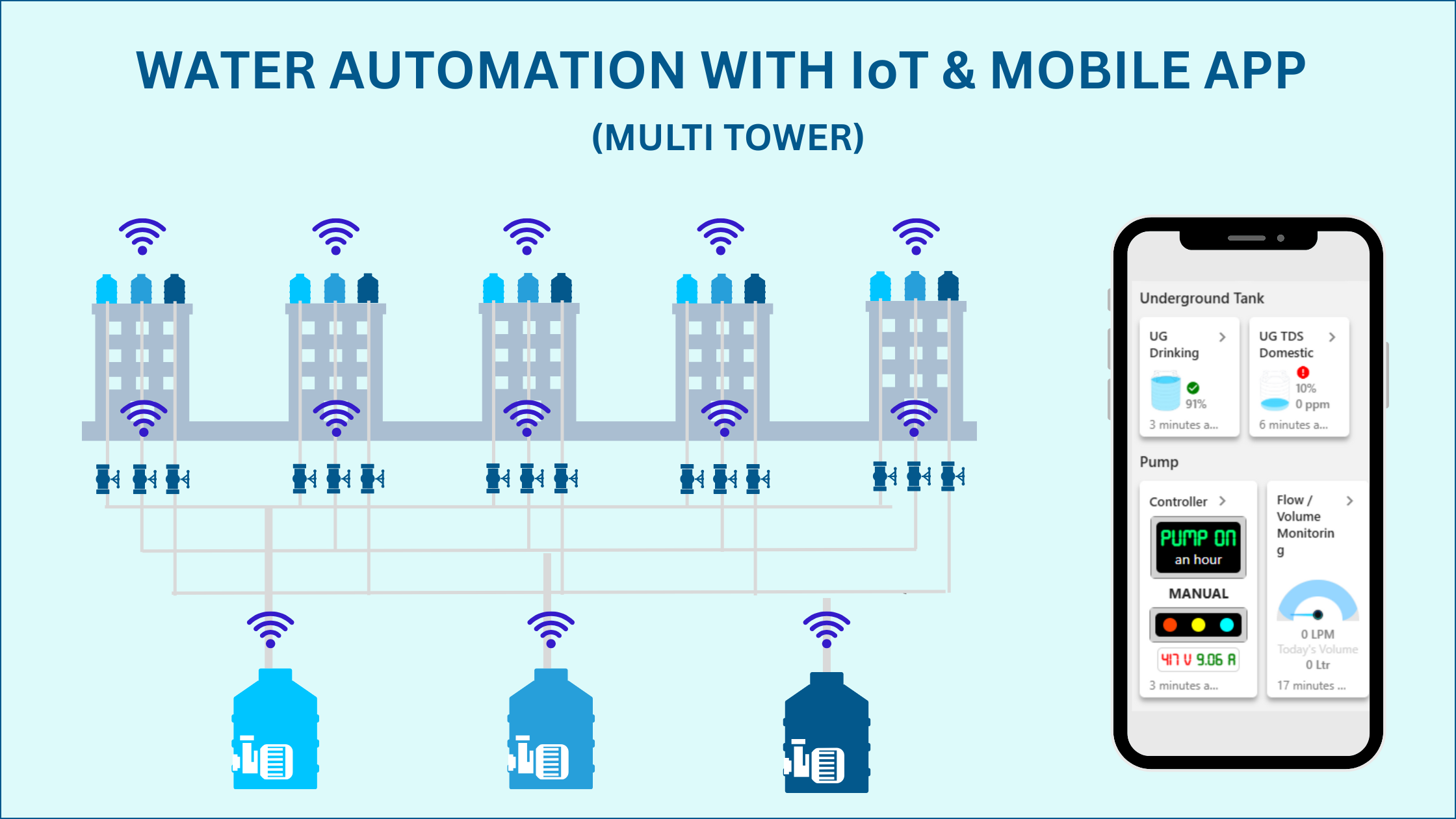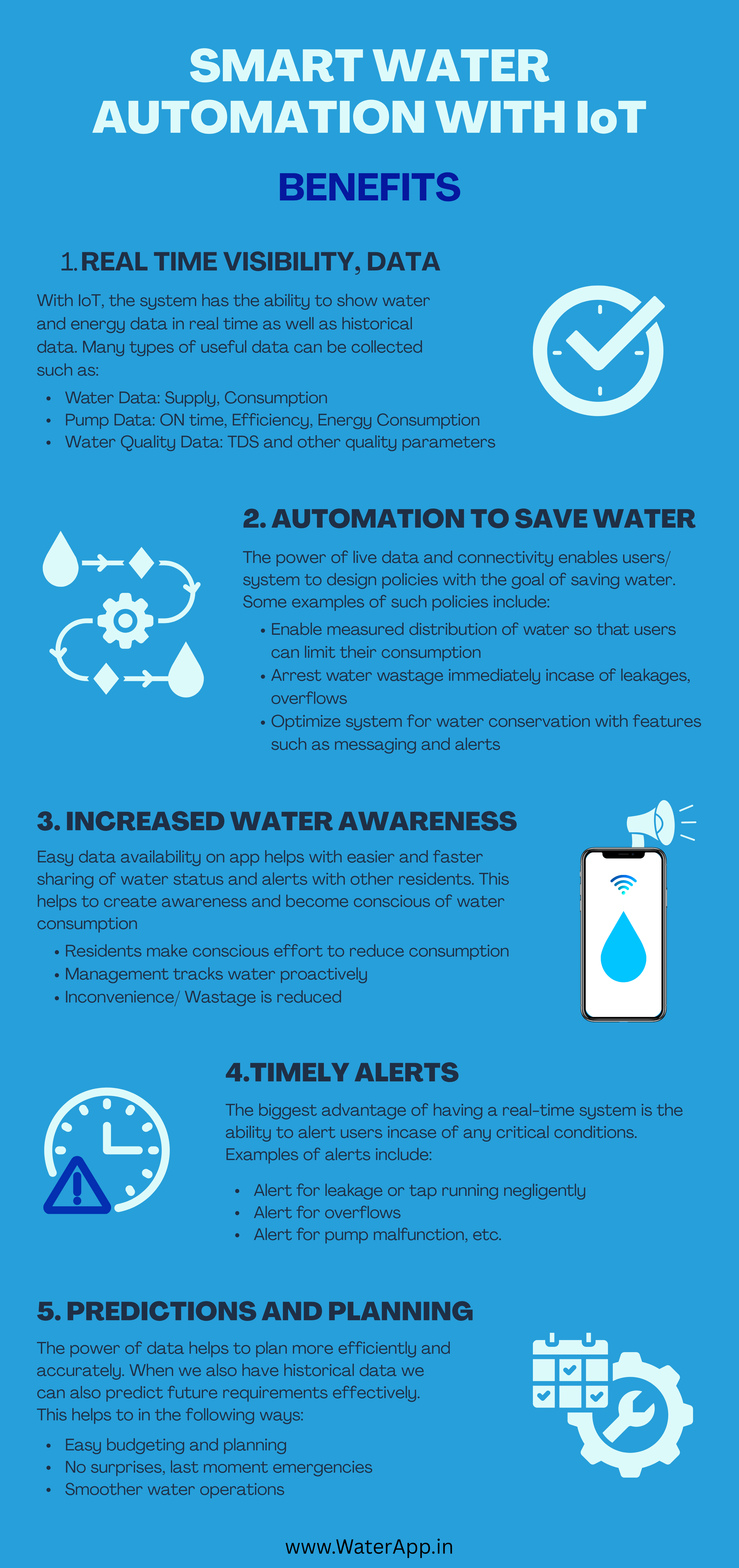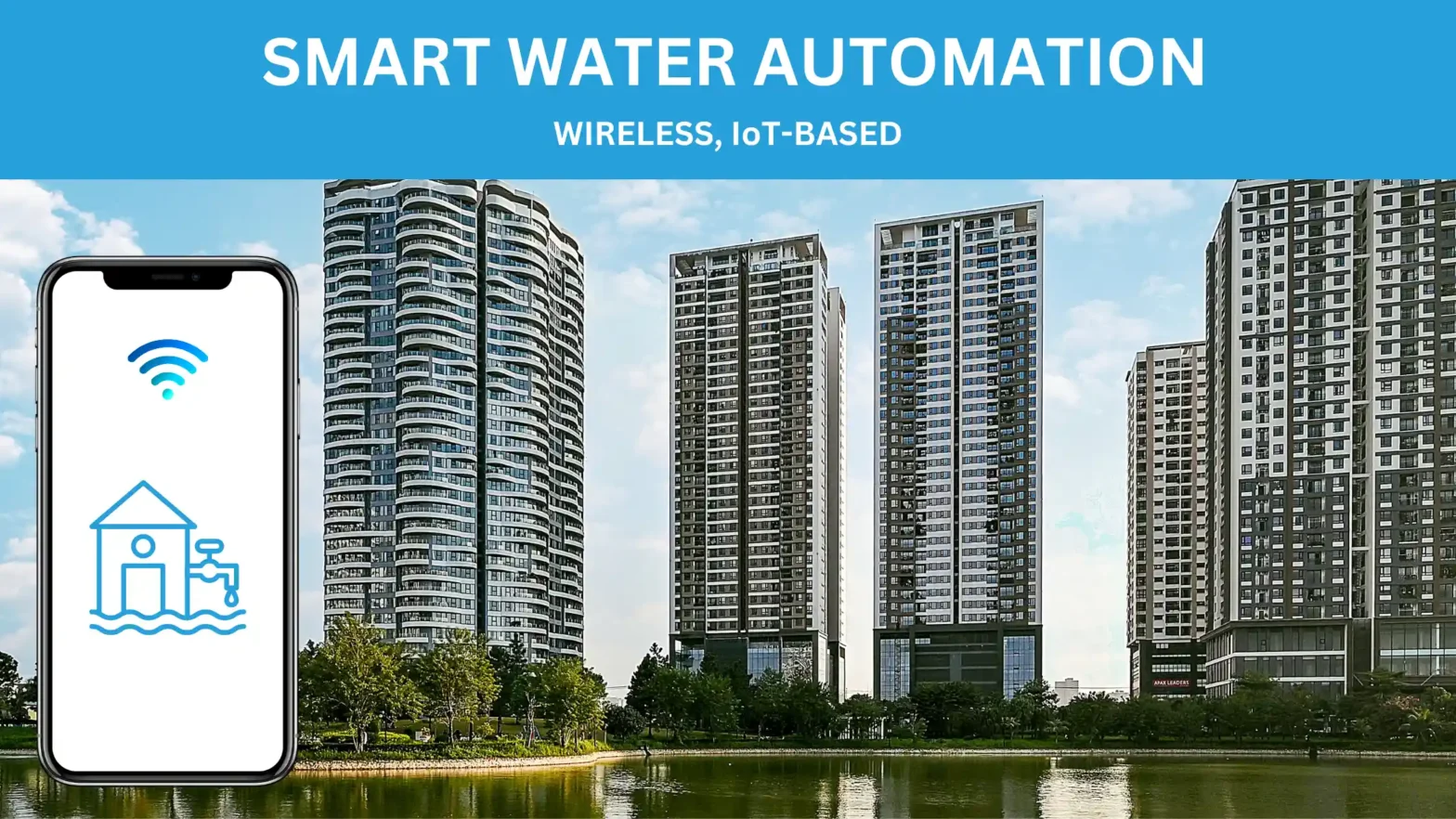CHAPTER 4: IoT-Based Smart Water Automation and Benefits
What is IoT-Based Automation?
IoT-based automation represents a significant leap forward in Water Management Systems. Unlike traditional setups, IoT automation is wireless and can be seamlessly integrated with apps or desktop interfaces, allowing users to monitor and control the system from anywhere. These systems are much more intelligent than traditional automation, as they can learn from past usage, predict future needs, and provide a wide array of features that enhance efficiency and convenience. The ability to interface with an automatic water pump controller or an automatic valve controller makes IoT-based automation a powerful tool in modern water management.

Benefits of IoT-Based Smart Water Automation:
1. No Wires:
With IoT-based automation, there’s no need for messy wiring. The system is entirely wireless, making it easier to install, manage, and expand. This eliminates one of the major drawbacks of traditional systems and allows for greater flexibility in system design.
2. Visibility:
One of the standout features of IoT automation is the ability to monitor your system from anywhere. Whether you’re at home, at work, or on vacation, you can keep an eye on your water usage and pump operation through your smartphone or computer. This level of visibility is unmatched by traditional systems and can significantly improve the management of water resources.
 3. Data Collection:
3. Data Collection:
IoT systems excel at data collection, providing valuable insights into both water usage and pump performance:
Water Data: The system tracks water usage, supply levels, and availability, helping you understand your consumption patterns and make informed decisions.
Pump Data: Information such as running time, energy consumption, and efficiency is logged, allowing for better maintenance and operational efficiency. This data can be invaluable for optimizing the performance of your automatic water pump controller and ensuring your system runs smoothly.
4. Trends and Predictions:
IoT automation doesn’t just collect data—it uses it to predict future requirements and identify potential issues:
Prediction of Requirements: The system can anticipate water needs based on historical data and adjust operations accordingly.
Leakage Detection: Advanced sensors and data analysis can detect leaks early, preventing water loss and potential damage.
Intelligent Suggestions: The system can offer suggestions to save water, making your home or business eco-friendlier and more cost-efficient.
5. Awareness Creation:
Sharing data and statistics becomes simple with IoT systems, making it easier to create awareness about water usage and conservation. This can be particularly beneficial in community settings where multiple users need to be informed about water usage patterns.
6. Customizable Automation Policies:
IoT-based systems allow for the creation of different automation policies based on season, trends, and water availability. For example, during the dry season, the system can adjust to conserve water, while in periods of abundance, it can ensure optimal distribution. This flexibility is a significant upgrade from traditional systems.
7. Critical Condition Alerts:
IoT automation can send alerts for critical conditions, allowing for immediate action:
Water Consumption Alerts: If water is being consumed faster than average, you’ll be notified immediately.
Pump Activity Alerts: The system will alert you if the pump is starting more frequently than average, which could indicate a problem.
Supply Alerts: Notifications are sent if the water supply is less than expected.
Availability Alerts: If water availability isn’t sufficient to meet predicted demand, the system will inform you, enabling proactive management.
8. Valve Automation:
One of the most powerful features of IoT-based systems is the automation of valves, offering precise control over water flow:
Leakage Response: The system can automatically stop water flow if a leak is detected, preventing waste and damage.
Dynamic Flow Control: Water flow can be dynamically adjusted based on need, ensuring that each area receives the right amount of water.
Equal Distribution: In multi-story buildings, the system can achieve equal distribution of water to each tower, ensuring fairness and efficiency.
IoT-based smart water automation is revolutionizing how we manage water resources. By integrating wireless technology, real-time data collection, and intelligent analysis, these systems provide unprecedented control, efficiency, and convenience. Whether it’s through an automatic water pump controller, an automatic valve controller, or a water leak detection system, the benefits of IoT automation are clear: better resource management, cost savings, and a more sustainable approach to water usage.
Also Read:
Chapter 1: What is Water Automation?
Chapter 2: Elements of Water Automation
Chapter 3: Problems with Traditional Water Automation

